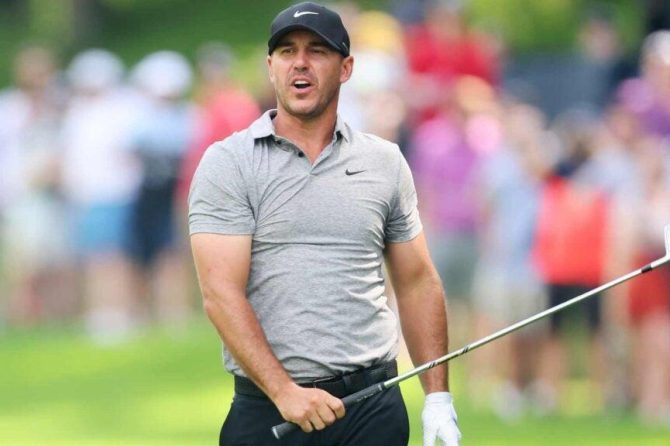In the pursuit of excellence within the sport of golf, the significance of a well-rounded fitness regimen cannot be overstated. The integration of exercise science into golf training provides a framework that leverages biomechanical principles, physiological insights, and psychological strategies. By understanding how the body moves, responds to physical demands, and adapts to training stimuli, golfers can develop tailored programs that enhance efficiency and performance. This comprehensive approach not only addresses physical conditioning but also fosters mental acuity, empowering athletes to navigate the challenges of the course with confidence and precision. As golf continues to evolve, the application of scientific principles stands as a cornerstone for players aiming to optimize their fitness and elevate their game.
Principles of Biomechanics in Golf Performance Enhancement
Understanding the principles of biomechanics is crucial for golfers aiming to enhance their performance. Biomechanics examines the mechanical aspects of movements, analyzing forces and body mechanics that influence swing efficiency. By optimizing these mechanical principles, players can improve their swing mechanics, increase clubhead speed, and reduce the risk of injury.Key elements to consider include:
- Force Generation: Developing power in the golf swing requires effective force application through the legs and core.
- Body Alignment: Proper posture and alignment ensure greater accuracy in ball striking and consistency in performance.
- Rotation mechanics: Efficient shoulder and hip rotation contributes substantially to the kinetic chain,maximizing distance while minimizing strain.
To implement biomechanical principles effectively, golfers should engage in specific training focusing on the following areas:
| Training Focus | Biomechanical Principle |
|---|---|
| Strength training | Enhances force production and stability. |
| Flexibility Exercises | Improves range of motion, aiding in optimal swing mechanics. |
| Dynamic Warm-Up | Prepares the body for movement and reduces injury risk. |
By integrating biomechanical analysis into training programs, golfers can track their progress and make data-driven adjustments. Video analysis and motion capture technologies can provide insights into swing mechanics, allowing athletes to identify weaknesses and tailor their conditioning accordingly. This method not only enhances physical performance but also fosters a deeper understanding of the intricacies involved in the golf swing, leading to improved consistency and confidence on the course.
Physiological Adaptations for Improved Endurance and Strength in Golfers
In the quest to enhance golf performance, understanding physiological adaptations is essential. The game demands not only skill and precision but also significant endurance and strength. Integrating targeted training regimens based on exercise science principles allows golfers to optimize their physical capabilities. Key focuses include:
- Muscle Hypertrophy: Engaging in resistance training promotes muscle growth,particularly in key muscle groups such as the legs,core,and shoulders. This increased muscle mass supports improved swing mechanics and power generation.
- Cardiovascular Endurance: Incorporating aerobic exercises enhances overall stamina. Activities like running, cycling, or rowing contribute to increased oxygen delivery to muscles, which is crucial for maintaining energy levels throughout 18 holes.
- Flexibility and Mobility: Incorporating stretching and mobility work enhances range of motion, critical for an effective swing. Targeted flexibility training can prevent injuries and improve overall biomechanics during play.
Strength training should be tailored to mimic the specific movements performed in golf. Programs emphasizing compound lifts (e.g., squats, lunges) translate effectively to the forces exerted during a swing. Periodization is another essential component,ensuring that training loads are systematically adjusted to avoid plateaus and promote continuous enhancement. The following table illustrates the targeted strength training components that can significantly impact golf performance:
| exercise | Target Muscle Group | Reps/Sets |
|---|---|---|
| Squats | Legs, core | 3 sets of 8-12 reps |
| Rotational Medicine Ball Throws | Core, Shoulders | 3 sets of 10-15 reps |
| Deadlifts | Back, Legs | 3 sets of 6-10 reps |
Lastly, the integration of these physiological adaptations requires a holistic approach, combining strength training, endurance exercises, and flexibility routines. By aligning training with the specific physical demands of golf, players not only enhance their performance but can also prolong their careers in the sport. Ultimately, embracing a science-backed methodology unlocks the potential for golfers to achieve significant improvement in their overall game.
The Role of Sports Psychology in Developing Mental Toughness on the Course
Sports psychology serves as a critical component in shaping a golfer’s mental resilience and overall performance. Through various techniques, athletes can cultivate a mindset that not only embraces the pressures of competition but also flourishes under those circumstances. The key elements of **visualization, self-talk, and goal-setting** play a substantial role in this development. By engaging in **mental imagery**, golfers can rehearse specific shots and scenarios, effectively programming their subconscious to respond confidently during actual play. Alongside this, positive self-talk helps combat negative thoughts that may arise, empowering the golfer to maintain focus and motivation.
Moreover, developing routines is essential for creating a sense of comfort amidst the unpredictability of the game. By establishing consistent **pre-shot routines**, golfers can mentally prepare themselves for each shot, reducing anxiety and enhancing concentration. This practice not only helps in managing expectations but also fosters a sense of control, which is crucial for mental toughness. Additionally, setting realistic and measurable goals can aid athletes in tracking their progress and celebrating incremental achievements, thus reinforcing motivation and commitment to improvement.
Incorporating these psychological strategies is not a standalone solution but rather a complementary aspect of a holistic approach to golf training. To effectively integrate sports psychology with physical training, consider the following strategies:
| Strategy | Description |
|---|---|
| Visualization techniques | Practice mental imagery sessions before training to simulate competitive scenarios. |
| Positive Self-Talk | Develop affirmations to counter negative thoughts and bolster confidence. |
| Pre-Shot Routines | Establish a personal sequence of movements or thoughts to reduce anxiety before each shot. |
| SMART Goals | Set Specific, Measurable, Achievable, Relevant, and Time-bound goals to track development. |
Designing a Comprehensive Training Regimen: Integrating Strength, Flexibility, and Mental Skills
Designing a comprehensive training program requires an integrated approach that combines **strength training**, **flexibility exercises**, and **mental skills development**. These elements work synergistically to enhance overall golf performance. For strength, focus on compound movements such as squats, deadlifts, and bench presses to build core stability and power. incorporating rotational exercises, such as woodchoppers or medicine ball twists, can specifically target the muscles used during a swing, promoting a more explosive and controlled motion.
Along with strength, flexibility exercises are vital for improving the range of motion and preventing injuries. Key stretches should include dynamic warm-ups like arm circles and leg swings, followed by static stretches targeting the shoulders, hips, and lower back. Maintaining optimal flexibility allows golfers to achieve a full swing arc and enhances balance throughout the game. Integrating yoga or Pilates can also serve to improve core strength while increasing mental focus and relaxation on the course.
Lastly, mental skills training is an often-overlooked aspect of golf fitness. Techniques such as visualization, mindfulness meditation, and controlled breathing can significantly enhance concentration and reduce anxiety during play. Creating a routine that includes mental practices can definitely help golfers maintain composure under pressure and develop a confident mindset. Utilizing tools like journals to track progress and reflection can foster continuous improvement in both physical and psychological aspects of performance.
Monitoring and evaluating Fitness Progress through evidence-Based Methods
Monitoring and evaluating fitness progress is essential for any golfer aiming to enhance performance. By utilizing evidence-based methods, coaches and trainers can systematically assess an athlete’s physical capabilities and track improvements over time. **Key components of this process include:**
- **Regular Functional Assessments:** Conducting baseline and periodic functional tests helps identify strength, flexibility, and balance levels relevant to golfing.
- **Biomechanical Analysis:** Using motion capture technology to analyze swing mechanics can highlight areas needing improvement and allow for tailored interventions.
- **Physiological Testing:** Cardiorespiratory fitness measurements, like VO2 max, provide insight into overall physical conditioning, directly impacting endurance on the course.
To gain a comprehensive view of a golfer’s fitness journey, data collection must be ongoing and systematic. Implementing a **graphic portrayal of progress** can aid in visualizing performance changes. Below is a simple example of how fitness metrics can be displayed:
| Assessment | Baseline Score | Current Score | progress |
|---|---|---|---|
| Flexibility (Sit and Reach) | 15 cm | 20 cm | +5 cm |
| Strength (Bench Press Max) | 80 kg | 90 kg | +10 kg |
| Endurance (1.5 Mile Run) | 12 min | 10 min | -2 min |
By leveraging technology and systematic data collection, golfers can develop a clearer understanding of their strengths and weaknesses. With this actionable feedback, tailored training programs can be refined to target specific weaknesses, ultimately driving improvements in performance.Such evidence-driven approaches ensure that golfers not only enhance their physical capabilities but can also translate these improvements into better on-course execution.
integrating exercise science into golf training presents a considerable possibility for enhancing overall fitness efficiency. By applying principles of biomechanics, physiology, and psychology, golfers can develop structured regimens that target key areas such as strength, flexibility, and endurance.This multifaceted approach not only optimizes physical performance but also fosters lasting improvements in mental focus and resilience. As the sport of golf continues to evolve, the importance of a scientifically-informed training strategy becomes increasingly evident.Implementing evidence-based practices will not only equip athletes to reach their full potential but also enrich their experience on the course. Future research and continued exploration of exercise science will further illuminate effective methods for golfers at all levels, promoting a holistic approach to fitness that is as dynamic as the game itself.




